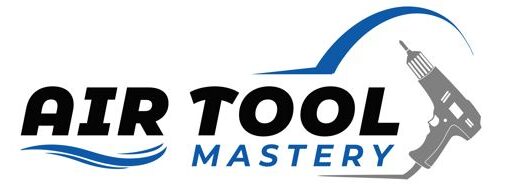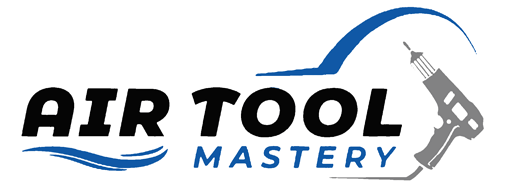Air compressors are the cornerstone of countless industrial processes, revered for their ability to convert power into potential energy stored as pressurized air. At its core, a compressor sucks in atmospheric air, reducing its volume through compression, and then releases it at the higher pressures necessary for various pneumatic applications. The pressurized air is used for tasks ranging from powering machinery and tools to controlling HVAC systems and aiding in the production of consumer goods.
The ubiquitous presence of air compressors can be seen across diverse sectors, including manufacturing, construction, automotive, and energy production. Their versatility and efficiency make them critical components in industrial workflows, contributing to the continual advancement of operational capabilities and productivity across the globe.
The motor serves as the heart of an air compressor, driving the mechanism that compresses air and facilitating the core function of these vital machines. A motor’s role extends beyond the simple conversion of electrical energy into mechanical force; it determines the efficiency, reliability, and power output of the compressor. Motors are designed to meet the specific demands of the compressor’s application, accounting for variables like horsepower needs, torque, and energy consumption.
As industries strive for sustainability and cost efficiency, the motor’s innovation aligns with these goals, becoming a focus for advancements in air compressor technology. From variable speed drives to smart motor controllers, the evolution of motor design directly impacts the performance and environmental footprint of air compressors in the industrial landscape.
Air Compressor Motor Types and Components
Single-phase motors: Generally found in smaller air compressors, single-phase motors are suitable for residential use or light-duty applications. They are preferred for their simplicity and compatibility with standard household electrical outlets.
Three-phase motors: Common in industrial settings, three-phase motors offer greater power efficiency and are designed for heavy use. They require a three-phase power supply and are more complex,, but provide a smoother power delivery for continuous operation.
Gasoline/Diesel motors: Used in portable air compressors, these motors free users from the reliance on electrical power sources. Ideal for outdoor or remote applications, they come with the trade-off of fuel costs and emissions.
Core Components of Air Compressor Motors
Stator: The fixed part of the motor’s electromagnetic circuit, typically consisting of windings on an iron core, the stator generates a magnetic field that enables the motor to run.
Rotor: The rotating component located inside the stator, the rotor includes an output shaft that physically turns to deliver mechanical power. Rotational movement is induced by the electromagnetic interaction with the stator.
Bearings: Bearings are crucial in reducing friction and supporting the rotational movement of the rotor within the motor. They come in various types, such as ball or roller bearings, and are designed to withstand the load while minimizing wear and tear.
Windings: Motor windings consist of insulated wiring coiled around the core of the stator and rotor. These windings are essential for creating the electromagnetic field that causes the rotor to turn. Different materials and thicknesses of wire can influence the motor’s efficiency and performance.
Horsepower (HP): Horsepower is a measure of the motor’s power output, indicating its capacity to perform work. In air compressors, a higher HP often translates to a greater ability to compress larger volumes of air.
Revolutions per minute (RPM): This specification denotes the speed at which the motor’s output shaft rotates. A higher RPM means the motor can deliver compressed air more quickly, but it may also result in increased wear over time.
Service factor (SF): The service factor is a multiplier that indicates how much a motor can be safely overloaded under ideal cooling conditions. A motor with an SF of 1.15, for example, can operate at 15% over its rated horsepower without incurring significant damage. This factor is useful for understanding the durability and potential overload capacity of a motor.
The Mechanics of Air Compressor Motors
An air compressor motor is the heart of the compressor, converting electrical energy into mechanical energy to power the compression process. When the motor is activated, an electric current flows through the windings of the stator, generating a magnetic field. This field interacts with the windings on the rotor, creating a second magnetic field. These magnetic fields push against each other due to the electromagnetic principles of attraction and repulsion, causing the rotor to turn. This rotational motion is what drives the compressor’s mechanism, typically a piston or rotary element, to compress the air.
Start-up mechanisms for motors are essential, as the initial power demand can be significant. A direct start or across-the-line start sends full voltage to the motor, causing it to start abruptly. This method is simple and low-cost but can lead to a large spike in current, mechanical stress, and a sudden torque on the motor and power grid. In contrast, a soft start gradually ramps up the voltage, allowing the motor to begin turning slowly and increasing to full speed over several seconds. This mitigates electrical spikes and mechanical stress, resulting in smoother operation and prolonging the life of the air compressor motor.
Sizing and Selecting the Right Motor
Choosing the appropriate motor size for an air compressor is vital, as it directly affects the efficiency and longevity of the system. To calculate the required horsepower, the intended use and required air flow of the compressor must be assessed. One must determine the compressed air needs in terms of cubic feet per minute (CFM) and align these with the output capability of the motor, ensuring the motor’s horsepower rating sufficiently powers the compressor without unnecessary strain.
When matching motor characteristics to compressor requirements, one should consider factors such as voltage, phase, and duty cycle. The motor’s rated horsepower should ideally be closely matched to the compressor’s demands to ensure optimal performance. A motor’s efficiency rating also plays a critical role in sustained performance and energy consumption.
The implications of under-sizing a motor are significant: it can lead to frequent overloads, overheating, and premature failure. Over-sizing, while less detrimental, can mean wasted energy and higher operational costs due to inefficiencies in running a motor at less than its optimal load. Both scenarios highlight the importance of accurate sizing for air compressor motors to maintain a balance between performance, energy efficiency, and equipment lifespan.
The 5 Best Motors for Air Compressors on Amazon
1. VEVOR 5HP SPL Air Compressor Electric Motor, 230V 15.0Amps, 56 Frame 3450RPM, 5/8″ Keyed Shaft
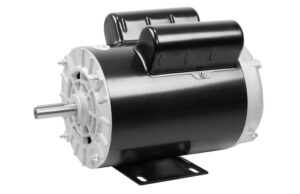
Key Features
- 5HP SPL Air Compressor Motor
- Single Phase
- 0A, 230V, 2 Poles
- 56 Frame, 5/8″ Keyed shaft
- Shaft length-1.88″
- Open Drip-proof
- Made of high-quality steel material
- Dual rotation direction
Product Description
The VEVOR 5HP SPL Air Compressor Electric Motor is a powerhouse designed to drive your compressor unit with unwavering reliability. Operating on a single-phase 230V and drawing 15.0 Amps, this motor ensures your compressor runs efficiently. With 3450 revolutions per minute, its 2 pole design provides a robust output for your compressed air needs.
The motor fits neatly into a 56 frame and features a 5/8″ keyed shaft that is 1.88 inches long, accommodating a multitude of compressor models with ease. The open drip-proof construction shields the motor from moisture and debris, while the high-quality steel material promises durability.
Plus, the added convenience of dual rotation direction allows for flexible installation and use. Whether for professional or home use, the VEVOR motor stands as a prime choice for those seeking reliable performance and simple operation in their air compressor setup.
2. VEVOR 3HP Air Compressor Motor, 3450RPM Electric Motor, 230V 15 Amps, 5/8″ Keyed Shaft 56 Frame

Key Features
- 3HP motor
- 3450 RPM
- Single phase
- Full load amps: 15.0A, 230V, 2 Pole
- 56 Frame, 5/8″ Keyed shaft, Shaft length-1.88″.
- Open drip-proof
- Dual rotation directions
Product Description
Streamline your air compressor’s performance with the VEVOR 3HP Electric Motor. This robust 3450 RPM motor operates efficiently on a single-phase 230V power supply and is designed to handle full loads at 15.0 Amps. The motor’s compatibility with numerous compressor models is assured through its standard 56 frame size and a 5/8″ keyed shaft measuring 1.88 inches in length.
Constructed with an open drip-proof design, the VEVOR motor is secured against the intrusion of moisture and particulates, ensuring it runs smoothly in various work environments. Engineered with versatility in mind, the motor is capable of dual rotation direction, giving you the freedom to integrate it seamlessly into your setup. Whether your applications are industrial or for DIY projects at home, this 3HP motor brings the essential blend of power and durability to your air compressor activities.
3. VEVOR 5HP SPL Air Compressor Electric Motor, 230V 15.0Amps, 56 Frame 3450RPM, 5/8″ Keyed Shaft, CW/CCW Rotation, 1.88″ Shaft Length

Key Features
- 5HP SPL Air compressor motor
- 3450 RPM
- Single Phase,
- 0A, 230V, 2 Pole
- 56 Frame, 5/8″ Keyed shaft and Shaft length-1.88″
- Open drip-proof
- Dual rotation
Product Description
Maximize the efficiency of your air compressor with the formidable VEVOR 5HP SPL Electric Motor. Boasting a brisk 3450 RPM and operating effortlessly on a single-phase 230V power source, this motor keeps constant to a 15.0 Amps full load. Its industry-standard 56 frame and a 5/8″ keyed shaft with a 1.88-inch shaft length ensure compatibility with a wide range of compressor models.
The motor’s open drip-proof construction shields it from debris and dripping liquids, making it a reliable choice for various working conditions. With the additional capability of clockwise and counterclockwise rotation, the VEVOR 5HP SPL motor adapts to your specific machinery configurations. Whether it’s for professional industrial requirements or personal DIY endeavors, this motor provides a potent combination of strength and resilience to your compressor tool arsenal.
4. EVOR 2HP SPL Air Compressor Motor, 3450 RPM Electric Motor, 115/230V, 15/7.5Amps, 5/8″ Keyed Shaft
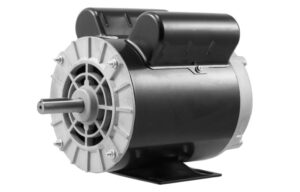
Key Features
- 2 HP motor
- 3450 RPM, 15.0-7.5A, 115/230V, 2 Pole
- 56 Frame, 5/8″ Keyed Shaft, 1.88″ Shaft Length
- Compact design
- Sturdy
- Dual rotation
- CSA certified
Product Description
Designed to deliver robust and reliable performance, the VEVOR 2HP SPL Air Compressor Motor is a versatile addition to your tools. Operating at a swift 3450 RPM with dual voltage capabilities, this electric motor runs on either 115V with 15.0 Amps or 230V with 7.5 Amps. This adaptability aligns with various power supplies, making it a go-to choice across different setups. The motor’s compact design does not compromise on strength, maintaining a 56 frame and featuring a 5/8″ keyed shaft with a practical 1.88″ shaft length to ensure wide-ranging compatibility.
Its sturdy construction guarantees long-term durability and minimal maintenance. As with the 5HP model, this 2HP version offers the luxury of dual rotation, affording you the flexibility to integrate it seamlessly into your existing systems. Furthermore, the CSA certification attests to the motor’s conformity with recognized safety standards, giving you peace of mind regarding its quality and reliability. Whether you’re outfitting a workshop or looking for a reliable motor for hobbyist projects, the VEVOR 2HP SPL Air Compressor Motor is engineered to support your endeavors with consistent power and efficiency.
5. Air Compressor Motor 3HP SPL Electric Motor, 3450 RPM, 115/230V Single Phase, 56 Frame 5/8 Keyed Shaft 60 HZ
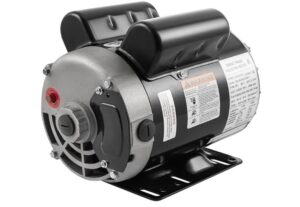
Key Features
- 2 pole, 56 frame
- 115/230V, AMP: 18/9A,
- 3450 RPMs
- Shaft diameter of 5/8“
- Shaft length – 1.88”.
- 3 HP
Product Description
The 3HP SPL Air Compressor Motor is a powerhouse that captivates with its efficiency and robust design. Engineered to run at a swift 3450 RPM and compatible with 115/230V, this motor boasts a high level of versatility with its 18/9 Amp dual voltage capacity. Its thoughtful design presents a 56 frame and a 5/8″ keyed shaft that is 1.88” in length, ensuring compatibility with a broad range of equipment.
This motor’s resilient build not only promises longevity but also consistent top-tier performance for varied applications. Whether it’s for professional environments or for the dedicated DIY enthusiast’s home workshop, this motor’s reliable and steady power output will smoothly drive your projects to completion. Add to that, the motor’s simple installation process and low maintenance requirements make it a smart investment for anyone in need of a strong and dependable air compressor motor.
FAQs Related to Air Compressor Motors
What is the main benefit of using a dual voltage air compressor motor?
Dual voltage air compressor motors, like the 3HP SPL Electric Motor, offer flexibility for use in a variety of settings where power supply voltages differ. This means you can operate the motor with either 115V or 230V, making it suitable for different electrical setups without additional conversions.
Can these motors be used for applications other than air compressors?
Yes, while they are designed primarily for air compressors, these motors are versatile and may be adapted to run other equipment that requires similar power specifications and shaft dimensions.
Are these air compressor motors energy efficient?
Yes, these motors are built to maximize efficiency and performance under loaded conditions while attempting to minimize electricity consumption. However, overall energy efficiency also depends on the compatibility of the motor with the equipment it’s powering.
What should I consider when selecting an air compressor motor?
When selecting an air compressor motor, you should consider the horsepower requirements, voltage compatibility, shaft size, and the RPMs necessary for optimal operation of your equipment. Additionally, factor in the motor’s frame size to ensure it fits in your existing setup.
How do I maintain an air compressor motor for longevity?
Regular maintenance for an air compressor motor includes keeping it clean and dust-free, checking electrical connections, lubricating bearings if necessary, and ensuring it is operating under the correct load and voltage. Consult the manufacturer’s manual for specific maintenance recommendations.
Conclusion
To ensure the efficient and reliable operation of air compressors, the selection and maintenance of the right motor cannot be overstressed. A motor that matches the horsepower, voltage, shaft dimension, frame size, and RPM requirements of your equipment will translate into superior performance and longer equipment life. Proper and regular maintenance further contributes to the motor’s longevity, helping to prevent downtime and costly repairs.
Looking ahead, the future of air compressor motor technology is promising, with a continuous push towards more energy-efficient designs and the integration of smart technologies. Innovations are likely to focus on motors that automatically adjust to load changes, offer predictive maintenance features, and integrate seamlessly with the Internet of Things (IoT) to provide real-time monitoring and control. These advancements stand to redefine operational efficiency and equipment management in various industries.
